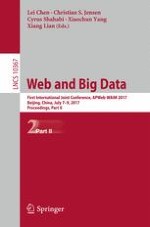This two –volume set, LNCS 10366 and 10367, constitutes the thoroughly refereed proceedings of the First International Joint Conference, APWeb-WAIM 2017, held in Beijing, China in July 2017.
The 44 full papers presented together with 32 short papers and 10 demonstrations papers were carefully reviewed and selected from 240 submissions. The papers are organized around the following topics: spatial data processing and data quality; graph data processing; data mining, privacy and semantic analysis; text and log data management; social networks; data mining and data streams; query processing; topic modeling; machine learning; recommendation systems; distributed data processing and applications; machine learning and optimization.
